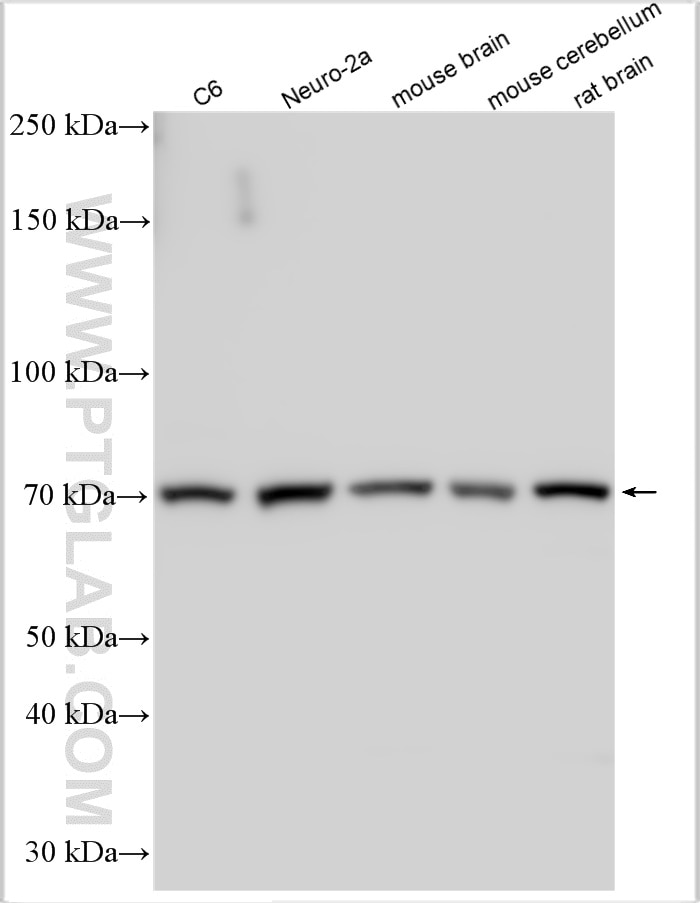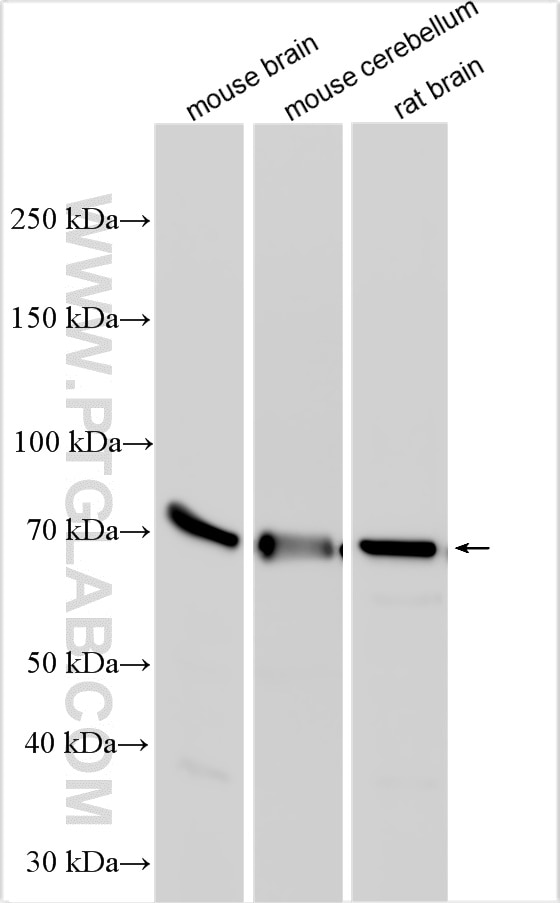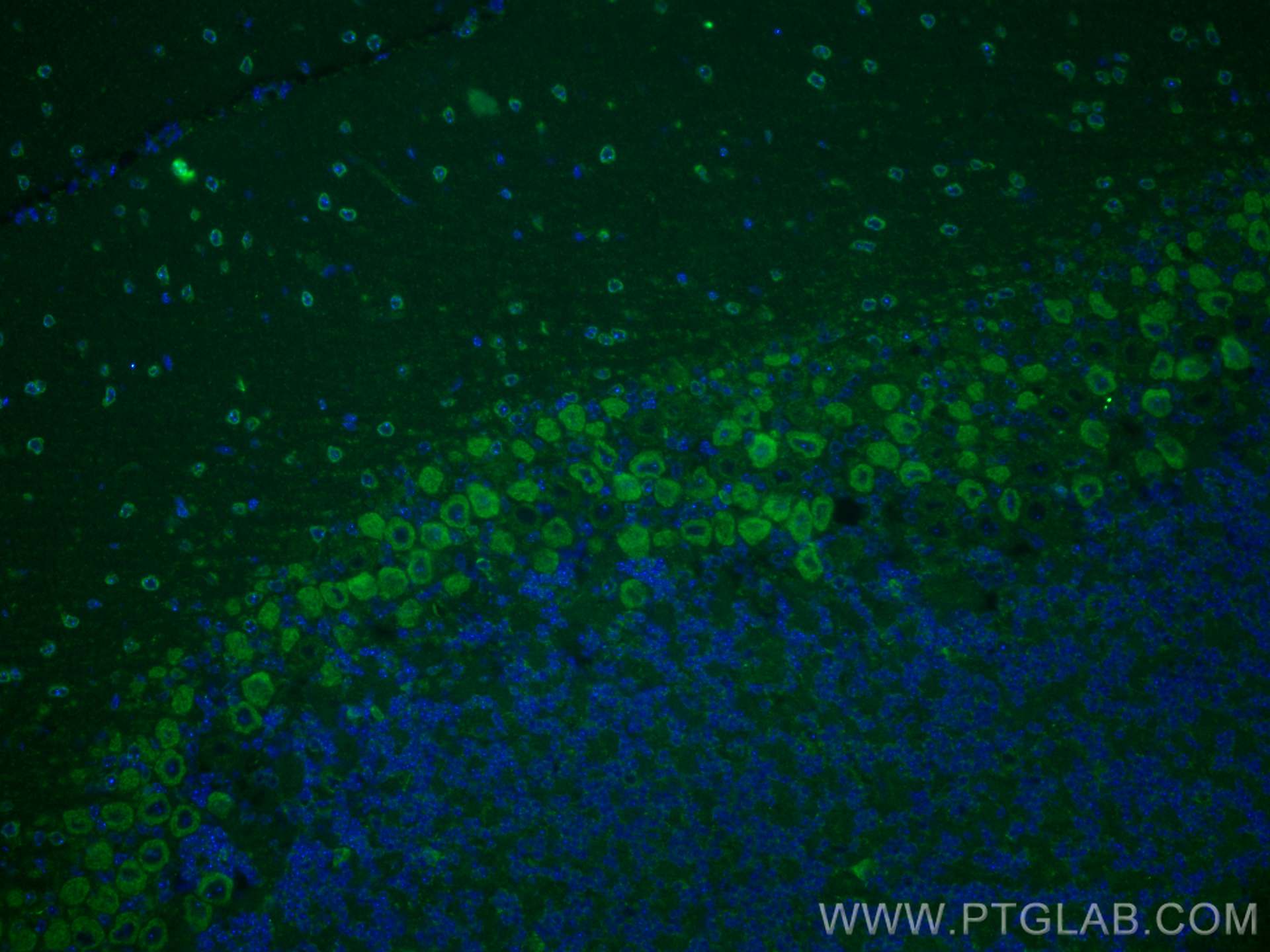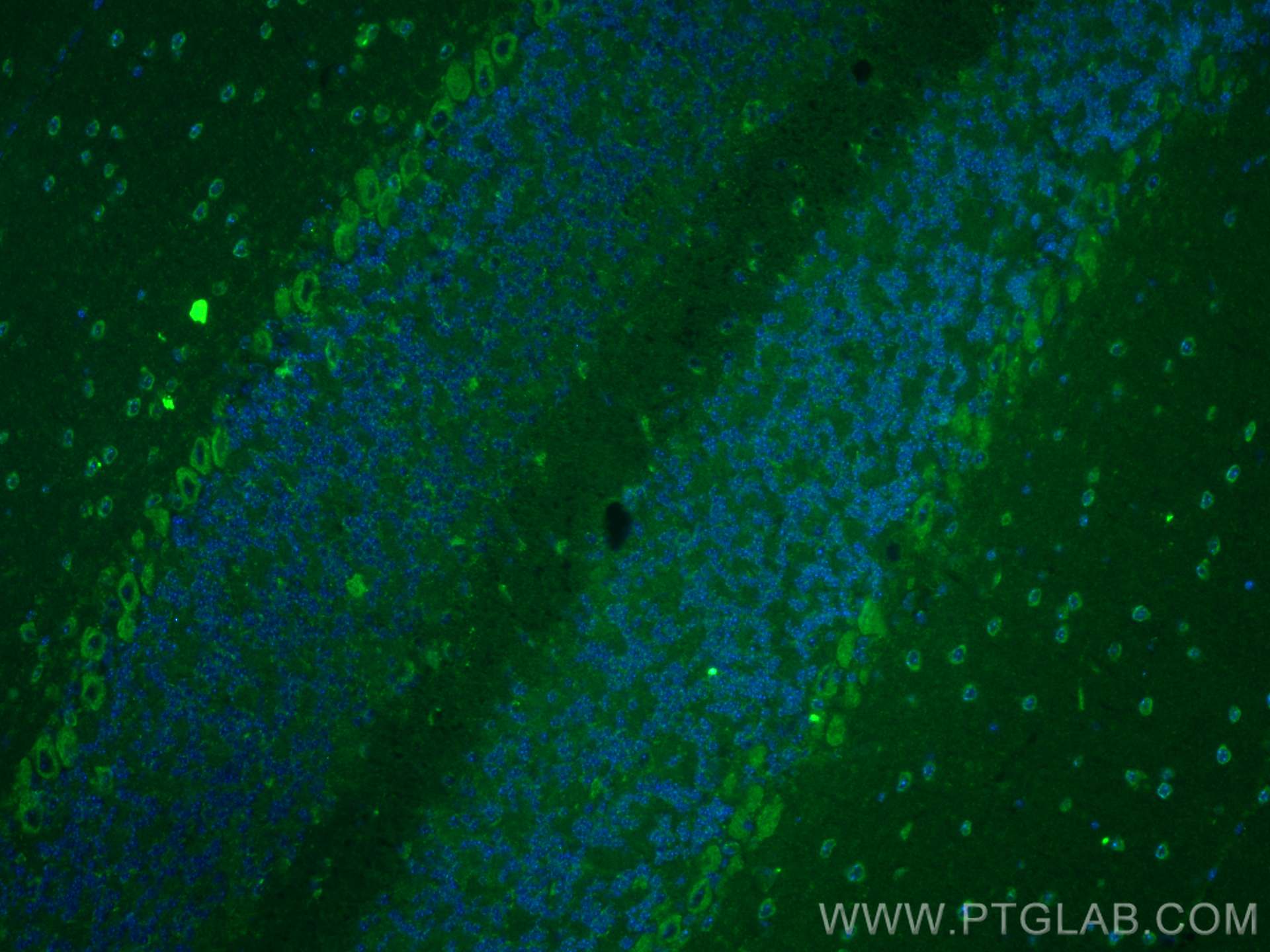Tested Applications
| Positive WB detected in | mouse brain tissue, mouse cerebellum tissue, rat brain tissue, Neuro-2a cells |
| Positive IF-P detected in | mouse cerebellum tissue |
Recommended dilution
| Application | Dilution |
|---|---|
| Western Blot (WB) | WB : 1:500-1:2000 |
| Immunofluorescence (IF)-P | IF-P : 1:50-1:500 |
| It is recommended that this reagent should be titrated in each testing system to obtain optimal results. | |
| Sample-dependent, Check data in validation data gallery. | |
Product Information
21245-1-AP targets SYT2 in WB, IF-P, ELISA applications and shows reactivity with human, mouse, rat samples.
| Tested Reactivity | human, mouse, rat |
| Host / Isotype | Rabbit / IgG |
| Class | Polyclonal |
| Type | Antibody |
| Immunogen |
CatNo: Ag15744 Product name: Recombinant human SYT2 protein Source: e coli.-derived, PGEX-4T Tag: GST Domain: 1-60 aa of BC100815 Sequence: MRNIFKRNQEPIVAPATTTATMPIGPVDNSTESGGAGESQEDMFAKLKEKLFNEINKIPL Predict reactive species |
| Full Name | synaptotagmin II |
| Calculated Molecular Weight | 419 aa, 47 kDa |
| Observed Molecular Weight | 70 kDa |
| GenBank Accession Number | BC100815 |
| Gene Symbol | SYT2 |
| Gene ID (NCBI) | 127833 |
| RRID | AB_3085646 |
| Conjugate | Unconjugated |
| Form | Liquid |
| Purification Method | Antigen affinity purification |
| UNIPROT ID | Q8N9I0 |
| Storage Buffer | PBS with 0.02% sodium azide and 50% glycerol, pH 7.3. |
| Storage Conditions | Store at -20°C. Stable for one year after shipment. Aliquoting is unnecessary for -20oC storage. 20ul sizes contain 0.1% BSA. |
Background Information
SYT2 (Synaptotagmin-2) a synaptic vesicle membrane protein, functions as a calcium sensor in vesicular trafficking and exocytosis. SYT2 is also plays a role in dendrite formation by melanocytes (PMID: 23999003). Mutations in SYT2 are associated with myasthenic syndrome, presynaptic, congenital, with or without motor neuropathy. SYT2 mutations cause a complex presynaptic congenital myasthenic syndrome (PMID: 26519543).
Protocols
| Product Specific Protocols | |
|---|---|
| IF protocol for SYT2 antibody 21245-1-AP | Download protocol |
| WB protocol for SYT2 antibody 21245-1-AP | Download protocol |
| Standard Protocols | |
|---|---|
| Click here to view our Standard Protocols |










